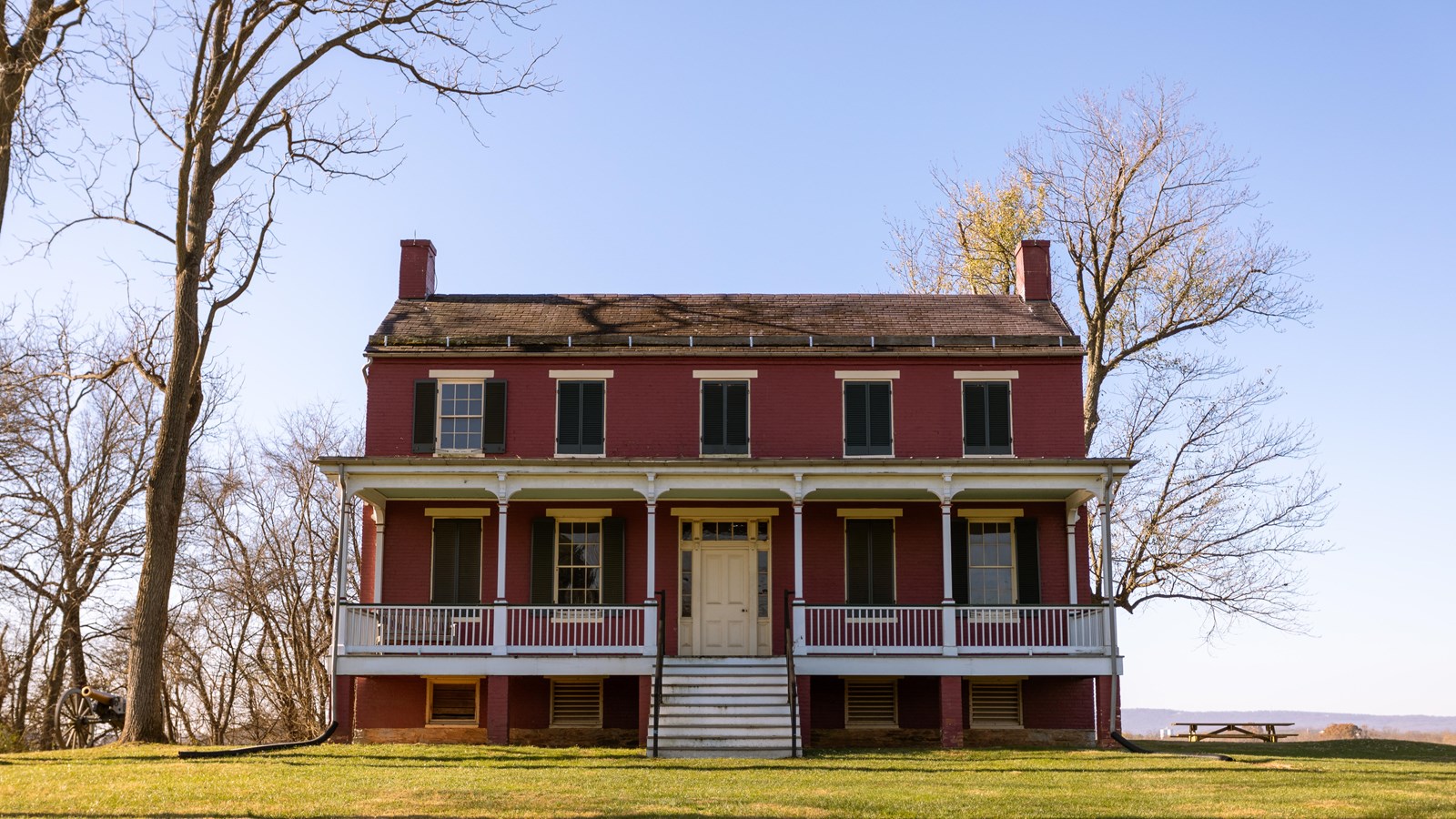Last updated: May 17, 2023
Place
Worthington House

NPS / Claire Hassler
Audio Description, Cellular Signal, Historical/Interpretive Information/Exhibits, Parking - Auto, Picnic Table, Scenic View/Photo Spot, Trailhead
Worthington House was built by Griffin Taylor around 1850 in two different stages, and it was a typical farmhouse of the period. The farm and the house were sold to Turner Ball and John Wheatley in 1856—along with Araby, the Thomas farm. Ball and his family lived in the house until 1862. The two men were partners with James Gambrill in a distillery business that failed in 1860, but the farms continued to be prosperous enterprises. Ball is credited with trying to elevate the house from simple farm house to gentleman’s house by adding decorative painting to both the parlor and the entry hall and grain painting the woodwork in the main rooms to resemble fine mahogany and walnut.
John and Mary Worthington bought the house and farm in 1862 and moved into it with their two sons, John and Glenn. In the winter of 1862–1863, Union troops camped in the area, and, while they had a major effect on the farm and the family who lived there, probably had little effect on the house. However, the Battle of Monocacy was fought around it on July 9, 1864. In his book, Fighting for Time, Glenn Worthington recounted his memories of the battle as a six-year-old, hiding with his family, some neighbors, and enslaved workers in the cellar room below the parlor. Glenn watched the battle through the slats in the boards covering the window to protect it. He was very much aware of the cannon in the side yard bombarding the Thomas House below them, and a rooster crowing every time the cannon was fired. He also watched the Confederates who had crossed the Monocacy at the ford below the house advance on the Union forces around the Thomas House, be driven back in the first assault, reassemble behind the Worthington House, and make the second charge down the hill. After the battle, it was used as a field hospital treating Confederate and Union wounded.
The Worthington family continued to live in the house for the next forty years and there were few changes made to it. As John and Mary aged and their sons moved out, a cousin, Lavinia Worthington, moved in as their caretaker, and she also took in boarders. It was probably at this time that the kitchen was moved upstairs to the room at the west end of the ell. Lavinia probably did her cooking on a woodstove installed in front of the fireplace.
After John and Mary’s deaths, the house stayed in the family and was rented out to tenant farmers for the next 48 years. Electricity was added in 1935, and water was pumped into the kitchen from a well in the side yard, but a bathroom was never installed. In 1953, the house was purchased by Jenkins Brothers, Inc. a local farming corporation. They used it to house migrant workers brought in during the summer to work the fields, raising fruits and vegetables for the cannery in Frederick. Most of these African American workers were housed either in the farm buildings or in the house, and the art work on the walls of the parlor date from this period, done by the workers or the homeless who might have taken refuge in the house doing the winter. The numbers of workers living in the space fluctuated but we do know that in June of 1961 approximately 60 workers and 28 children were on the farm. According to newspaper accounts, as many as fourteen people were living in two cow stalls in one of the barns.
The National Park Service purchased the house and farm in 1982.
- Duration:
- 2 minutes, 57 seconds
In 1860, John Breckinridge was Vice President of the United States and a candidate for President. Four years later, he was a Confederate General attempting to invade the city he once called home. Join ranger Anthony to learn more about Confederate General John Breckinridge.
